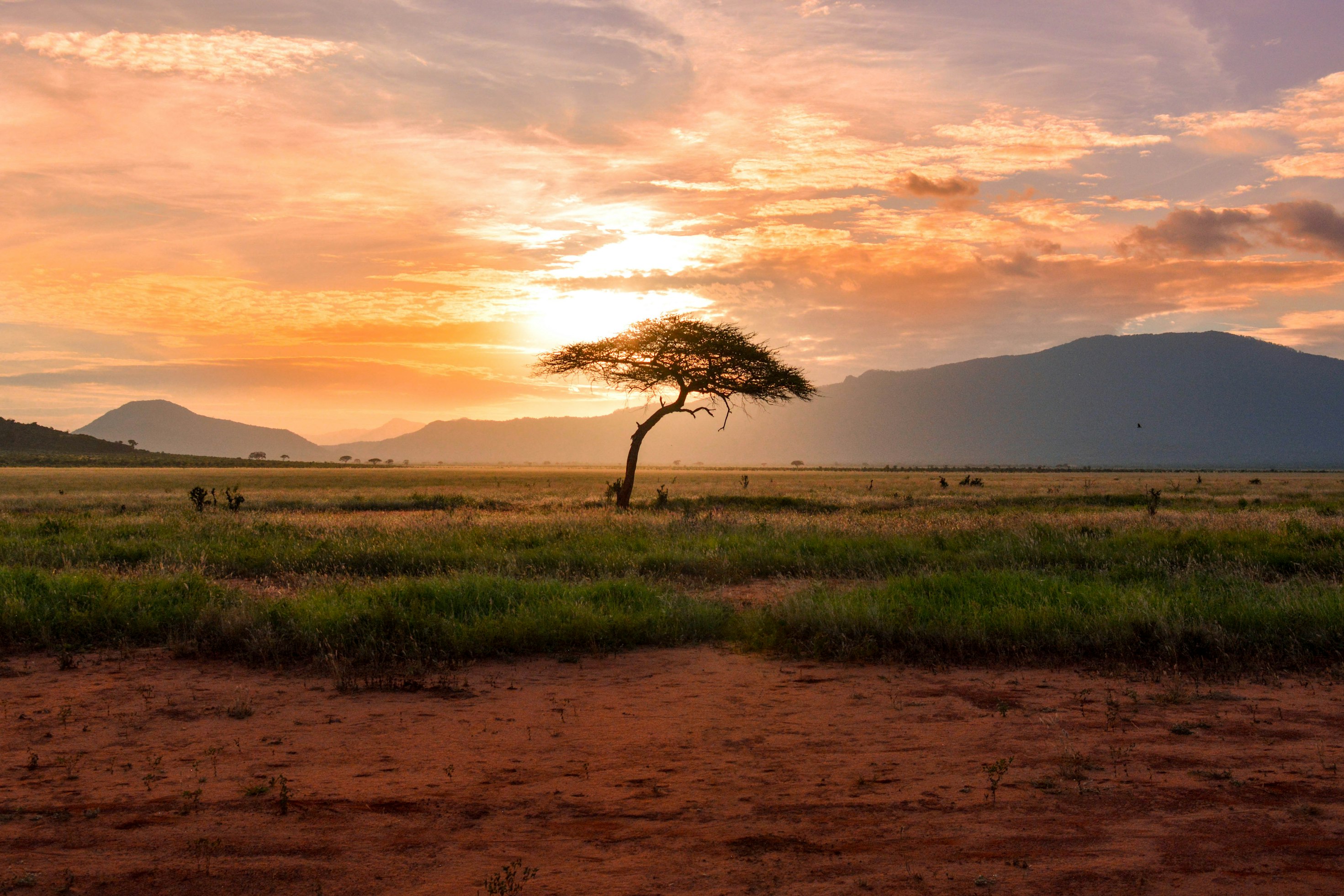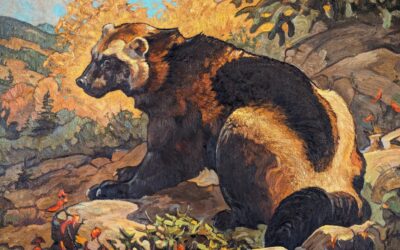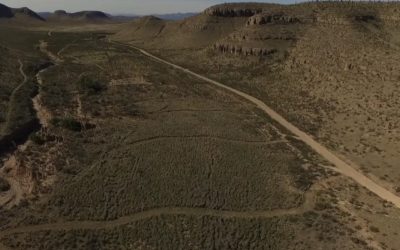The Predator-Prey Connection
“Everyone understands that predators control animal numbers. But of equal importance is predators’ effect on animal behavior, and the consequential benefit to habitat – and wildlife – that result from how animals behave when in the presence of predators.
Because traditional wildlife thinking fails to grasp this relationship, most conservationists have historically seen predators as parasitic to wildlife. This misunderstanding underlies much of the “War on Wildlife”, especially predator eradications – which to this day – most people believe helps wild animals.
NOTE: this article was originally published to ACHMOnline.org and wad written by Etienne Oosthuizen.
A deep dive into a Holistic Management key insight
The predator-prey relationship is one of the Four Key Insights that Allan Savory describes in Holistic Management, A common sense revolution to restore our environment. These four insights help us in our understanding of the natural world. I plan to dive deep into each of these insights in the future in an attempt to better understand where conventional thinking has got it so wrong.
Understanding the relationship
The physical impact of large herds being hunted by pack-hunting predators is one of the fundamental processes in grassland environments, which account for up to 40% of the earth’s land surface. Science, however, has hardly taken note of this process. It has always been a sideshow to the science of observing and documenting the hunting and breeding behaviour of grassland animals.
As a result, Science has steered society’s perception of the predator-prey relationship. The top hits on google all relate to the predator-prey relationship as natural population control. It describes how when prey numbers increase conditions are created to enable predator numbers to increase. This increase in predators in turn applies pressure to reduce the prey numbers. These are the natural ebbs and flows of predator and prey populations. There are numerous other factors which determine the population of any species.

Lions hunting a Buffalo at Londolozi
The key insight into the predator-prey relationship
There are an infinite number of consequences (both positive and negative, short and long term) of any behaviour found within the complexity of nature. This blog will explore the physical impact that pack-hunting predators introduce when they hunt large herding animals.
There is a common misconception that herding animals move because of predator activity. Predators do induce rapid and localised movement, but the general day-to-day movement of ungulate animals is more related to the fact that they don’t like to eat grass that they have urinated and defecated on. They’ll move and only return to an area once all signs of their dung and urine are gone.
The day-to-day movement is calm and peaceful. The individuals remain in close proximity to each other because the herd offers safety to individual animals and we’ll find that stress levels are lower, individual animals will take their time and put thought into where they place their feet. This calm day-to-day behaviour creates a less physical impact on the soil surface.
The video shows the calm movement of buffalo through their environment. It’s of a large herd (approx. 500) of Cape Buffalo that I time-lapsed at Londolozi in the Sabi Sands Wildtuin. They covered this 500m distance in just over an hour. I recorded it at one frame every three seconds and play it back at 24 frames per second. Take note of the grass in the foreground before and after the herd moved through. Does it look like 500 buffalo walked over it?
What happens when pack hunting predators are added?
A large herd of buffalo being hunted by lions would have little regard for where they place their hooves. Their muscles are tense and their bodies are ready to run. When the predator attacks, the earth gets the full impact of a large framed, running-hoofed animal. An adult Cape Buffalo can easily weigh around 700kg and we can imagine a large herd of over 1000 individuals, the physical impact on the land is massive.
Think about the physical impact of the herd running. There would be a complete disregard for the grass. Any old grass would be trampled, and bare soil will be chipped up. If we read first explorer accounts of wildlife populations, there were thousands of herds, each containing a thousand individuals. This stressful high impact behaviour will end soon when the hunt is over. So it is never continuous and only occurs in short periods.
Where would this behaviour occur?
If we observe where most prey animals prefer to spend their time, we find that it’s where they feel safe. These areas are generally open clearings and grasslands where they can more easily detect an approaching predator. The disturbed bare ground offers these animals the best advantage in sensing approaching predators. This is the beauty of nature because it is these areas that benefit the most from having the bare ground chipped up and tilled! This changes the germinating conditions for pioneer plants which establish and kick-start the process for plants to reclaim that area. It’s this act of animal impact that is so valuable to nature.

The Dimbangombe herd
Discovering the management tool found within the Predator-prey relationship
The behaviour of large ungulates densely bunched and moving can be used as a management tool to rehabilitate damaged grasslands and soils. We call this tool Animals Impact.
Animal Impact gives the Land Steward the ability to control the movement of a large hooved herd and use that to apply an impact on the ground. Their hooves chip up bare soil and enable seeds to germinate. It fills the gaps of bare soil between the plants and the result is that the tool of Animal Impact allows us to manage plant density and spacing within an environment.
Managing bare soil with Animal Impact

Animal Impact can also manage over-rested or moribund grass, grass that is starting to oxidise. By flattening oxidising grass onto the ground. It will have two immediate benefits. Firstly it would create a mulch layer and secondly puts the grass in contact with the soil. Where the soil microbiome can cycle back into the soil. This cycling will remove the nutrient block created when grass stands upright over a few seasons and slowly oxidises. This trampling will expose new growing points at the base of the grass plant. Traditionally we would use fire to expose these growing points. With the use of fire, oxidation is happening fast forward and still releases nutrients and minerals into the atmosphere.
The tool of Animal impact when used in the right place, at the right time and for the right reasons can have magical results.
Grass life cycle without animals

Grass life cycle with animal impact

Dung and Urine
Urine and dung associated with hooved animals cannot be overlooked and are an integral part of the tool, especially in environments that lacks microbiome diversity in the soil. The microbiome found in cattle dung is often identical to that found in the soils where those cattle occur. Driving ruminant animals over a barren landscape can inoculate the soils with this microbiome which is especially valuable in areas where fire may have passed through because fire kills the microbiome in the top few inches of soil. The best practice if you must use fire or if you had an unplanned fire is to run your herd of Cattle over the area shortly after the fire has been extinguished.

A herd of Buffalo, finishing work for the day
How should we use animal impact as a tool?
Carefully! I say that in jest, but there is an unsaid clause attached to this tool. Realistically there are two potential outcomes when predators are hunting prey. The predators are either successful or fail and move on to look for another opportunity elsewhere. Either way, the pressure and stress are taken off the prey. Bud Williams, a well-known American low-stress stock handler also refers to this release of pressure when herding cattle. He advocates that we apply pressure to get them to move where we want them to go and release it when they are there.
Attached to the tool of animal impact, is the tool of grazing. If animal impact helps us manage plant spacing and density, the tool of grazing helps us to manage plant health and recovery. There is a time and a place when we may choose to use these two tools at the same time. Combining the tools is like picking up a chainsaw, a powerful tool. It has limited applications outside of its purpose. And when used incorrectly the ramifications are huge.
Through each of these deep dives into the Holistic management key insights, we are filling gaps in our knowledge of how nature functions. As a reminder, our ecosystem does not function in parts and even though I look at each insight in isolation, they are deeply connected with each other.
In our next blog in this series, I will dig into the tool of grazing and how this relates to the key insight of time management when it comes to managing overgrazed pastures.
—
For more posts like this, in your inbox weekly – sign up for the Restoring Diversity Newsletter



